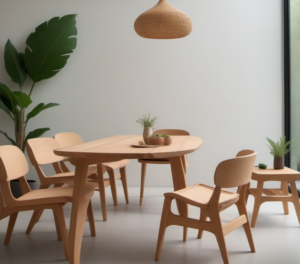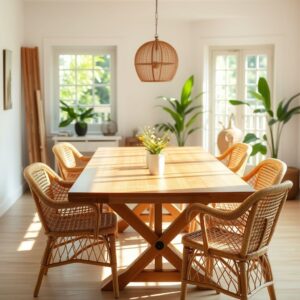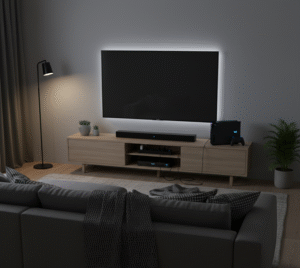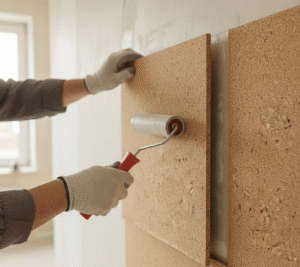Hook: The Air You Breathe Indoors May Be Slowly Harming You
Take a breath. Feels clean? Careful. Many homes have air that’s 2-5x more polluted than outdoors – thanks to everyday paints, cleaners, candles, furniture off-gassing, and even cooking. And during certain activities, those levels can spike far higher.
Here’s the twist. You don’t need to turn your living room into a humming machine shop to fight it. A plant-powered air purifier approach – smart plant choices + a few simple habits – can shift your air from “hmm?” to “ahh.”

Why Conventional Air Purifiers Aren’t the Full Answer
Classic purifiers help, sure. But filters cost money, motors drink electricity, and some “miracle” devices even emit ozone – an irritant you do not want in your lungs.
So if you’re done with noise, filter reminders, and questionable claims… lean into nature. Quiet. Green. Always on.
Enter the Plant-Powered Air Purifier: Nature’s Silent Defender
What is a plant-powered air purifier? It’s a strategy – using specific indoor plants (and the micro-ecosystems in their soil) to buffer VOCs, add gentle humidity, and make your rooms feel alive. This idea exploded after a NASA study showed potted plants removed certain chemicals in sealed chambers. Later research refined the story: plants help, but in normal homes, they’re supporting actors, not the whole show.

The Silent Killers in Your Home Air (and How Plants Fight Them)
- Formaldehyde (pressed wood, fabrics, paints)
- Benzene (plastics, smoke, solvents)
- Trichloroethylene/TCE (old cleaners, adhesives)
Tests found that leaves + roots + soil microbes can reduce these VOCs in controlled settings. That’s our blueprint for a plant-powered air purifier plan – pair targeted plants with good airflow and low-VOC habits.
Top 7 Plants That Double as Natural Air Purifiers
Ready to build your green roster? Start here. Low drama. High style. Keyword-smart.
- Snake Plant (Sansevieria) – Tough, sculptural, thrives on neglect. Great bedroom pick for a low-light, low-water plant-powered air purifier corner.
- Spider Plant (Chlorophytum) – Fast grower, kid-safe, pet-friendly. Drops your shoulders the moment you see it.
- Peace Lily (Spathiphyllum) – Shiny leaves, elegant blooms. In chamber studies, noted for TCE/benzene take-up.
- Areca Palm (Dypsis lutescens) – Airy fronds, gentle humidification; perfect for dry apartments and work nooks.
- Rubber Plant (Ficus elastica) – Bold, glossy leaves; great statement plant that also supports your plant-powered air purifier setup.
- Boston Fern (Nephrolepis) – Classic fern vibe; appreciates misting and bright, indirect light.
- Aloe Vera – Sun-lover, soothing gel inside, minimalist look on a kitchen sill.
Care shorthand: Bright, indirect light suits most; water when the top inch dries; avoid waterlogging (happy roots = happy microbes).

Do They Really Work? Myths vs. Reality
Let’s keep it straight. The famous NASA Clean Air Study was done in sealed chambers, not breezy living rooms. Later reviews, like this one by Drexel researchers, show that in real homes, ventilation changes air far faster than a few pots can.
Translation: plants are awesome… but not magic. Combine them with airflow and low-VOC choices for meaningful gains.
How to Turn Your Living Room Into a Natural Air-Purifying Zone
- Place plants where you live, not just where they look pretty. Desk, bedside, near entryways. Group 3-6 medium plants per high-use room for a noticeable “green buffer.”
- Open windows daily (even 5–10 minutes). Vent out VOCs from cooking, cleaning, and candles.
- Go fragrance-free when possible. Many scented products emit VOCs that react with indoor ozone to form ultrafine particles.
- If you use a mechanical purifier, choose certified units (and avoid ozone emitters). Your plants + a good HEPA is a power couple.

Beyond Clean Air: The Mental and Emotional Boost of Plant Purifiers
Here’s the “wow, I didn’t expect that” benefit: people around indoor plants often report lower stress and better mood. Your eyes relax. Your breathing slows. That emotional lift keeps you using your plant-powered air purifier setup day after day – because you like it, not just because it’s “healthy.”
Should You Rely Solely on Plant-Powered Air Purifiers?
No. And that honesty builds trust. The smart play is hybrid:
- Green squad of low-maintenance purifiers
- Regular ventilation + source control (low-VOC paints, unscented cleaners)
- Optional HEPA for particles; never ozone generators
That’s how you get cleaner air you can feel, without turning your home into a lab.
The Choice Between Breathing Danger or Breathing Life
You’ll breathe 20,000 times today. Every breath is either helping you or nibbling at your health. Start small. One plant-powered air purifier in the room you live in most. Then another. Open the window. Swap the scented spray. Simple moves. Big difference.






